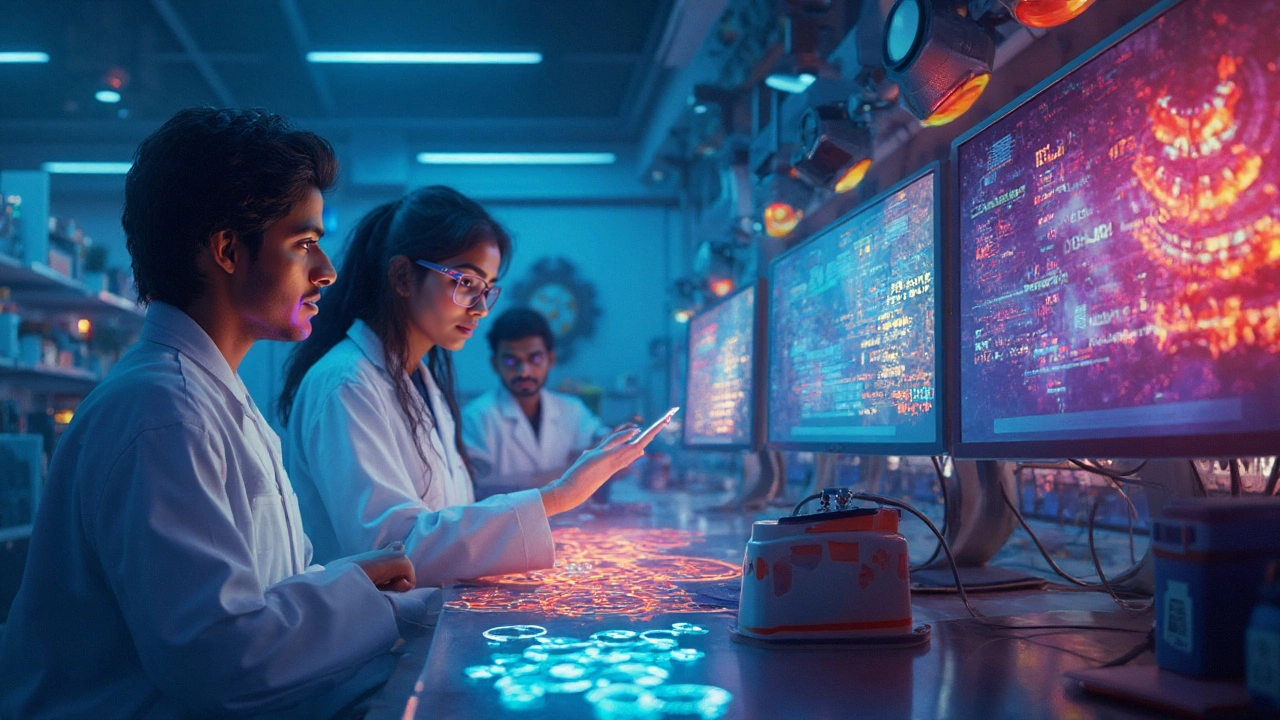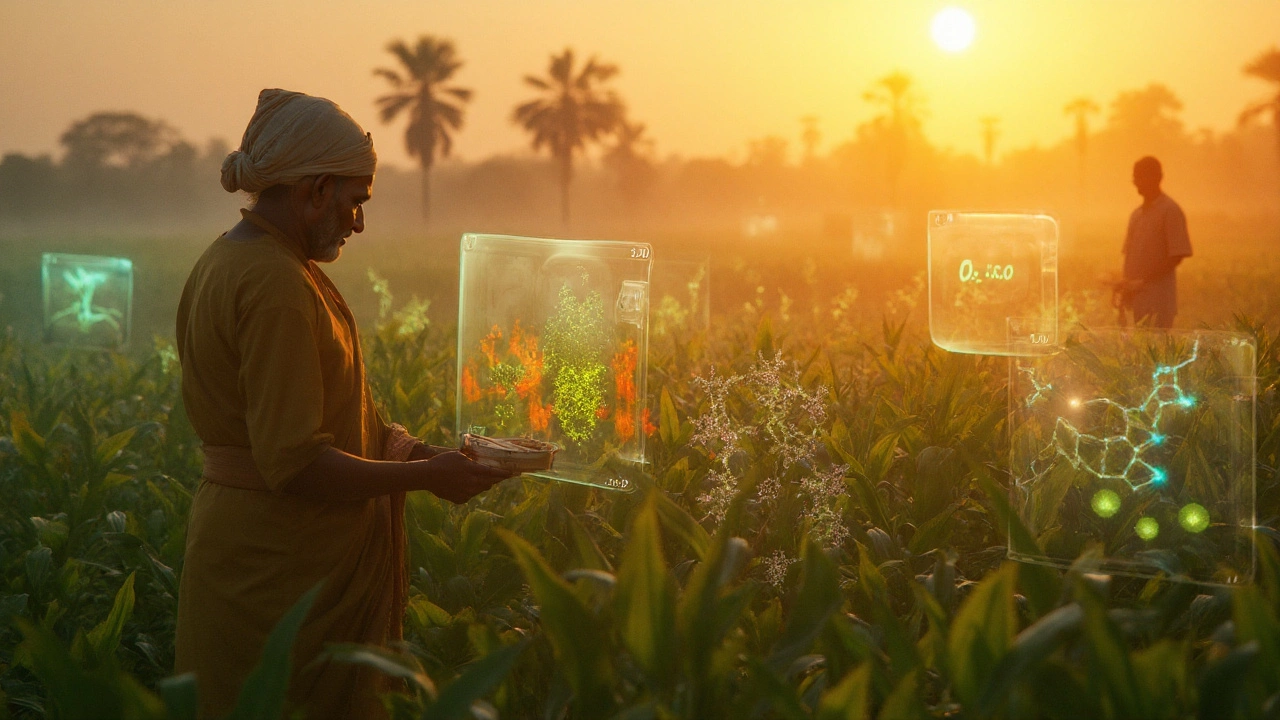Next Big Thing in Biotech: Gene Editing, Cellular Therapies, and Synthetic Biology
 Aug, 8 2025
Aug, 8 2025
If you think CRISPR was dramatic, strap in. The world of biotechnology is hurtling forward so fast, what seemed like science fiction yesterday is starting to shape your medical bills, your plate, and maybe even how you age. Want to know what’s likely to shake up our lives next? There’s more brewing than some genetically-modified yeast could ever toast.
The New Frontier: Gene Editing Meets Precision Medicine
Remember when CRISPR-Cas9 hit the news? It was touted as the way to "cut and paste" DNA, fixing deadly diseases or maybe giving someone blue eyes. But the real action right now is about making this wild technology much safer, more accurate and much more personal. People are getting treated not just as averages, but as unique puzzles, using advanced gene editors called base and prime editors. These don’t just snip; they swap out DNA letters, correcting single mutations with almost surgical finesse.
It’s not sci-fi to say a handful of rare blood disorders and some inherited blindness cases have already been treated in clinical trials using CRISPR. One patient with sickle cell disease received a gene-editing therapy in 2023, and counts as cured. This is spreading like wildfire: researchers now use these tools to tweak individual immune cells, prepping them to attack impossible-to-cure cancers.
The numbers are growing fast. According to the FDA, over 90 gene-edited therapies were under clinical trials as of July 2025. These aren’t all for rare diseases either — think diabetes, high cholesterol, maybe one day Alzheimer’s. What really takes it up a notch? The possibility to run genetic testing at birth or even before, then tailor your medical care with a generated blueprint. It means illness prevention, not just treatment. One cool tip: if you have a family history of a nasty inheritable disease, ask your doctor about newborn sequencing panels. Early detection will set the stage for when genetic therapies become mainstream.
Synthetic Biology: Rewriting Life to Tackle Big Problems
Synthetic biology sounds a bit like hacking life, because, well, it is. Engineers now design DNA code on a computer and print it out for bacteria, yeast, or even plants. Whole companies have popped up to rewire algae to churn out jet fuel, or yeast to manufacture vanilla—no orchid necessary.
But it’s going far beyond making flavors or fragrances. The hottest uses involve making completely synthetic cells, designing bespoke viruses to kill bacteria (goodbye, antibiotic resistance), and creating crops that thrive under extreme drought. The craziest part? Biologists are producing “cell-free” biosynthesis kits, little tubes packed with the essentials of life, making everything from medicines to rare chemicals, all without growing a whole organism. That's a game-changer for rural clinics or places hit by supply chain disasters.
Why care? Because synthetic biology won’t just fill pharma pipelines with new drugs—it’ll shape global food security, green the supply chain, and even change what we think is possible for recycling waste. In 2024, a startup made headlines by creating enzymes that eat plastic at record speed. That’s right, bugs cleaning up the planet. Want a practical tip? If you’re environmentally conscious, follow the advances in biodegradable plastics and biosynthetics. That "compostable" spoon could soon be the real deal, dissolving in your next pile of food scraps for once.
| Application | Example Product | Status (2025) |
|---|---|---|
| Gene-edited cell therapies | Sickle cell anemia cure | Commercial trials |
| Synthetic biology | Bioengineered enzymes for plastic | Pilot production |
| Personalized cancer therapies | T-cell modifications | Approved for select patients |
| Edit biological crops | Drought-resistant wheat | Harvesting/Field trials |
| Microbial manufacturing | Lab-grown vanilla | Commercial scale |

The Rise of Cellular Therapies: Healing By Replacing Cells
So you’ve heard about organ transplants, but how about swapping out dead or sick cells with brand-new ones grown in a lab? Cellular therapies—or “cell replacement” treatments—are rapidly moving from last-ditch effort to mainstream hope. Recent FDA approvals for treatments made from someone’s own cells, like CAR-T therapy for leukemia, prove the model works—and saves lives.
The process of manufacturing these therapies looks a bit wild. Scientists take a patient’s blood or tissue sample, “reprogram” it, grow billions of healthy cells, and then give them back. Stem cells—those chameleon-like cells that can turn into almost anything—are huge here. For instance, there’s a trial underway using eye cells made from stem cells to restore vision to people blinded by macular degeneration, and early results are looking pretty bright.
Insulin-producing beta cells for diabetics? Under development, using stem cells to regrow what the immune system destroyed. Spinal cord injuries? Experiments are restoring nerve cells, aiming to help paralyzed folks regain movement. Check out Japan’s government-backed stem cell trials—they’ve quietly created waves by speeding up approvals and investing heavily in regenerative medicine. The U.S. and Europe are scrambling to keep up.
If you’re personally affected by a chronic disease, or even just have a family member with one, pay attention to the clinical trials registry from the NIH or your country’s health authority. Early access to clinical trials can sometimes provide a lifeline, especially where cell therapies are showing promise.
Artificial Intelligence: Designing Proteins and Drugs at Warp Speed
Here’s where things go from fast to mind-bending. Artificial intelligence isn’t just helping scientists crunch numbers; it’s actually designing new molecules, proteins, and even picking the best combos for gene edits. Google’s DeepMind and OpenAI have published algorithm models like AlphaFold, which can predict a protein’s 3D shape in seconds—a job that once took years in a lab. Since 2021, the tech has mapped out millions of protein structures, opening doors to new drugs and even vaccines.
Drug discovery timelines have been smashed. Companies can use AI to simulate, “test” and optimize new drugs before setting foot in a wet lab. The first AI-designed drug for idiopathic pulmonary fibrosis entered phase 1 clinical trials in 2023. The next decade will likely see dozens of drugs created by algorithms, not people. Talk about disrupting tradition.
AI is also finding fingerprints in gigantic piles of genetic data. Want to know if your unique genetic snacks are setting you up for a metabolic syndrome or heart failure? A few startups now use AI-powered apps to give personalized health roadmaps based on your DNA, diet and wearable-device data. There’s a catch—data privacy is a huge question here, so if you ever agree to send in your spit or blood for sequencing, read the privacy agreement closely.
If you chase the next big job markets, add bioinformatics and AI-meets-genetics to your list. Every major biotech company is trawling for talent here—it’s not just for coders any more. Biologists, data nerds, and software geeks are working together, building the new backbone of personalized medicine.
No one knows exactly what biotech’s wildest creation will be five years from today, but the way it’s going, expect your medicines, foods, and even how you deal with aging to shift. If you ever long for the days when technology felt more tangible—wires, gears, stuff you could see—remember: biology is the new engineering. Whether you’re picking up a box of strawberries that don’t bruise, or reading about a cancer patient walking away healthy, you’re seeing the next big thing in biotech for real.